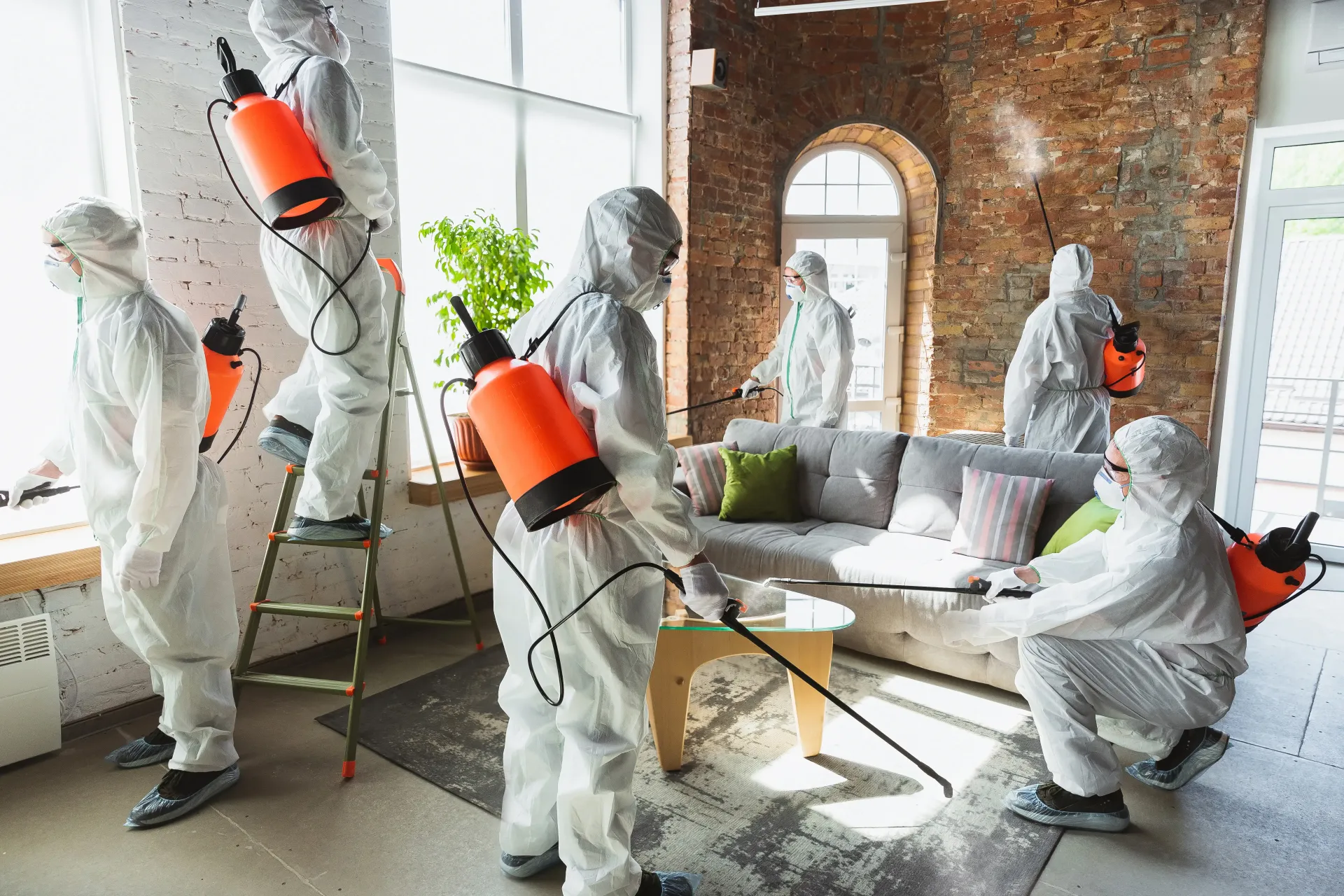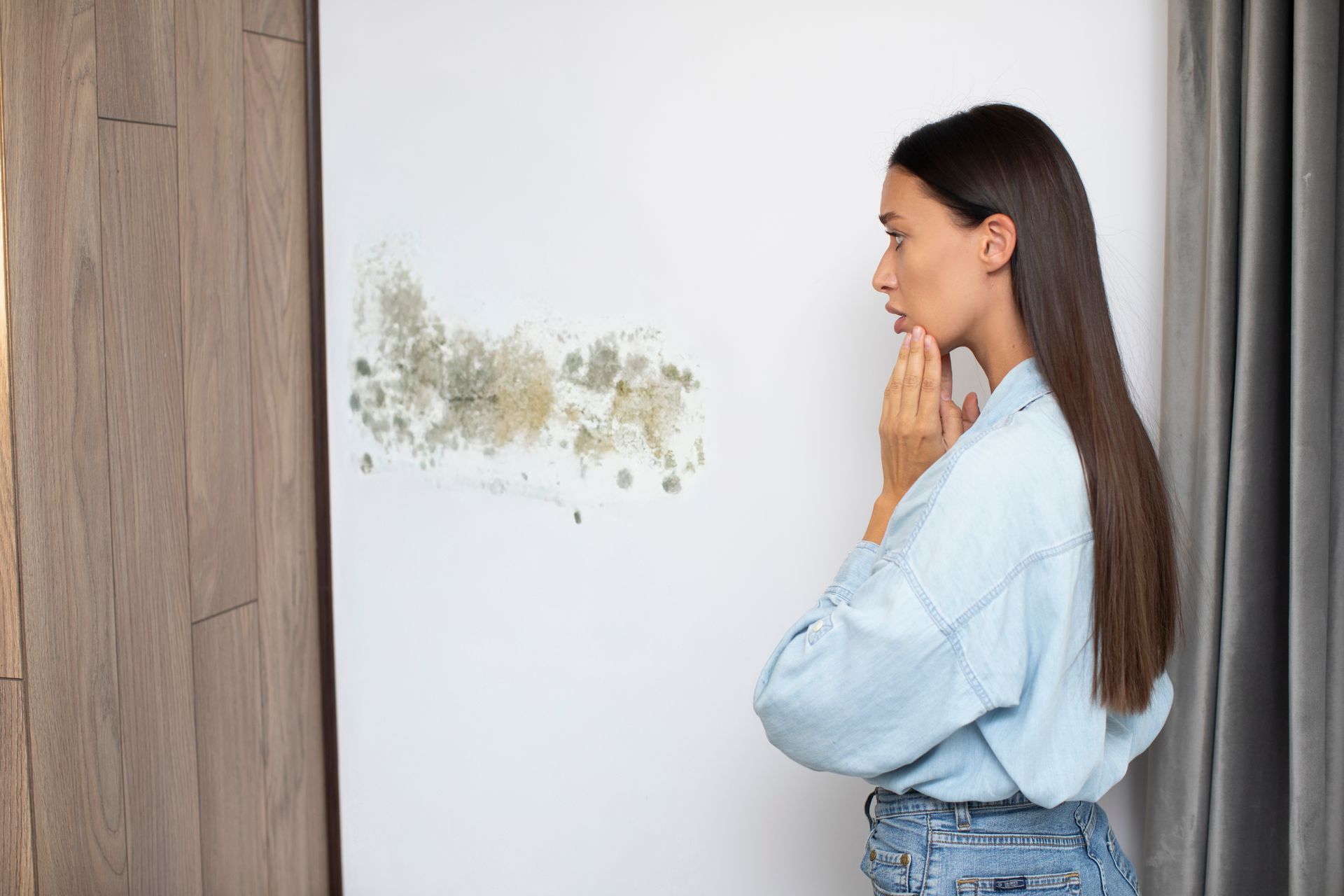When Is Mold Remediation Required?
Mold doesn't wait. Here's when you shouldn't either.

Mold remediation is required when you see black mold or discoloration on walls, notice a musty smell, have chronic allergic reactions, notice leaks from plumbing or roofing damage, or if a mold inspector has come to test and confirm the presence of mold.
Mold can be a silent invader, lurking in the corners of our homes, workplaces, and commercial buildings.
It doesn’t just affect the structural integrity of buildings; it poses significant risks to health and indoor air quality.
Knowing when mold remediation is required can save property owners from costly repairs and potential health problems.
Let’s explore the signs and scenarios that indicate it’s time to call in the experts.
Understanding Mold and Its Impacts
What is Mold?
Mold is a type of fungus that thrives in moist environments. Mold breaks down organic matter and causes allergic reactions in people. Hence, indoor mold growth can lead to serious issues.
Common types of mold, such as black mold (Stachybotrys chartarum), produce allergens and irritants that can cause health effects, especially in sensitive individuals.
How Mold Spreads
Mold spores are microscopic and travel easily through the air. They can settle on porous materials, such as drywall, ceiling tiles, and carpets, especially in areas with high humidity. Mold also seeks out cold surfaces to build its breeding ground infestation.
Once mold finds a damp surface, it grows and spreads, creating breeding grounds for mold damage in hidden spaces like air ducts and behind walls.
Key Signs Mold Remediation is Needed
1. Visible Mold Growth
If you see black mold, the most common type of mold, any discoloration, or fuzzy patches on walls, ceilings, or floors, it’s a clear sign that mold is present. In other words, "Houston, we've got a problem."
While visible mold is alarming, hidden mold behind surfaces can be even more dangerous and cause health issues in the long run.
2. Musty Odor
A persistent musty smell often signals mold contamination, even if it’s not visible to the naked eye. This mold odor typically indicates hidden active mold colonies thriving in damp areas.
3. Health Symptoms
Mold exposure can cause allergic reactions, respiratory issues, skin rashes, and red eyes. Individuals with compromised immune systems or pre-existing conditions face higher risks, making mold remediation crucial for minimizing potential health risks.
4. Water Damage
Leaks from plumbing, roof damage, or flooding create ideal conditions for mold growth. If you’ve experienced water damage, it’s essential to act quickly by hiring professional mold remediation services to prevent further mold infestation.
5. Mold Testing Results
Mold inspectors perform professional mold testing to determine the presence and extent of mold contamination. A professional mold remediator will follow the Environmental Protection Agency mold testing guidelines to ensure reliable results.
Why Mold Remediation is Essential
Health Risks
Mold exposure has been linked to various health concerns, including chronic respiratory problems and allergic reactions.
The Centers for Disease Control and Prevention (CDC) highlights the importance of addressing mold to protect vulnerable groups like children and senior citizens.
Structural and Property Damage
Mold weakens building materials, such as wood, drywall, and insulation, which can seriously affect the structural integrity of the building. This can be extremely costly if left unchecked.
Commercial Buildings
For commercial building owners and property managers, mold poses unique challenges. Mold contamination in HVAC systems can spread spores throughout a building, affecting tenants and employees with mold allergies.
Addressing toxic mold promptly minimizes disruptions and protects business operations.
Common Scenarios Requiring Mold Remediation
1. After Water Damage or Flood Cleanup
Flooded areas are prime breeding grounds for mold. Even after water removal, residual moisture in porous materials can lead to mold growth. Professional remediation ensures thorough cleanup.
2. Presence of Mold in HVAC Systems
Air conditioning systems can harbor and distribute mold spores throughout a building. Regular inspections and cleanings are essential to maintain indoor air quality.
3. High-Humidity Environments
Poorly ventilated spaces with high humidity, such as basements and bathrooms, often experience mold infestations. Keeping humidity levels below 50% can help prevent this.
4. Moldy Odor in Small Areas
Even small, localized areas with musty smells can indicate mold. Addressing these early prevents larger infestations.
5. Signs of Mold in Building Materials
Damaged ceiling tiles, crumbling drywall, or warped wooden surfaces are red flags for mold contamination. Immediate action can prevent further structural damage.
The Mold Remediation Process
Step 1: Mold Inspection and Assessment
Mold inspectors assess the affected area to determine the extent of contamination. The American Industrial Hygiene Association (AIHA) provides best practices for accurate mold assessments.
Step 2: Mold Containment
To prevent mold spores from spreading, professionals use physical barriers, negative air pressure systems, and personal protective equipment (PPE).
This step isolates the work area, ensuring safe and effective remediation.
Step 3: Mold Cleanup
Cleanup involves removing affected materials, such as mold-infested drywall, and using HEPA vacuums and antimicrobial treatments. Porous materials that cannot be salvaged are properly disposed of.
Step 4: Moisture Control
Addressing the underlying cause of mold is crucial. Fixing leaks, improving ventilation, and using dehumidifiers are all part of the remediation plan to prevent future growth.
Step 5: Air Quality Testing
The mold remediator will perform post-remediation air quality testing to confirm that the space is safe and mold-free. This final step provides peace of mind and ensures the remediation process is successful.
Hiring Mold Remediation Experts
Why Professional Help is a Good Idea
Mold remediation requires expertise and specialized equipment. Professionals follow industry standards to ensure thorough cleanup and long-term prevention, reducing overall remediation costs.
How to Choose a Mold Remediation Contractor
- Look for certifications from reputable organizations like the Institute of Inspection Cleaning and Restoration Certification (IICRC).
- Verify the contractor’s experience and ask for references.
- Ensure they provide a detailed remediation plan and follow EPA guidelines for mold cleanup.
Prevention Tips to Avoid Mold Remediation
- Fix Roof Leaks and Plumbing Issues Promptly: Repairing water leaks quickly prevents moisture buildup.
- Use Dehumidifiers: Maintain indoor humidity below 50% to inhibit mold growth.
- Inspect High-Risk Areas Regularly: Look for early signs of mold in basements, attics, and crawl spaces.
- Clean Regularly: Use eco-friendly antimicrobial agents to keep surfaces mold-free.
- Ensure Proper Ventilation: Install exhaust fans in bathrooms and kitchens to improve airflow.
Conclusion
Mold abatement is critical when signs of mold growth, water damage, or health symptoms arise.
Addressing mold promptly safeguards your property, health, and peace of mind.
If you suspect mold contamination, consult a trusted mold remediation professional who can also perform water damage restoration, such as C&J Environmental.
Call C&J Environmental today to protect your home or commercial building from the hidden dangers of mold.
External Links Summary
- EPA Mold Testing Guidelines: EPA’s mold testing guidelines
- CDC on Mold and Dampness: Centers for Disease Control and Prevention (CDC)
- AIHA Mold Assessment Practices: American Industrial Hygiene Association (AIHA)
- IICRC Certification Information: Institute of Inspection Cleaning and Restoration Certification (IICRC)
- EPA Mold Cleanup Guidance: EPA guidelines for mold cleanup

C&J Environmental LLC
Address: 1800 Mearns Rd., Warminster, Pennsylvania, 18974
Phone Number: (844) 620-7505
Email: anthony@candjcleanitall.com
All Rights Reserved | C&J Environmental

